Hotel on the Gargano
From the 4-star Gran Paradiso Hotel Spa you can easily reach the most interesting places of the Gargano.
Cagnano Varano
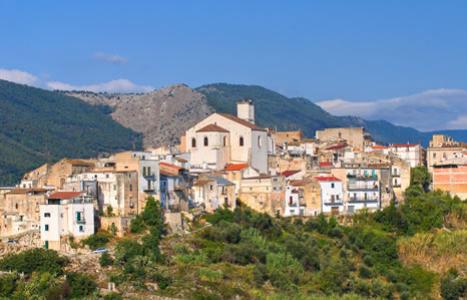
This delightful locality is located near Lake Varano, from which it takes its name. A small town that for several years has been developing its own project with the aim of accommodating all the tourists who arrive in this locality. Worth visiting are the
Baronial Palace and the Church of Santa Maria della Pietà as well as the view of the isthmus that separates Lake Varano from the Adriatic Sea.
Just 3 km from the town, you can visit the cave where according to local legend Archangel Michael appeared.
Just 3 km from the town, you can visit the cave where according to local legend Archangel Michael appeared.
Carpino
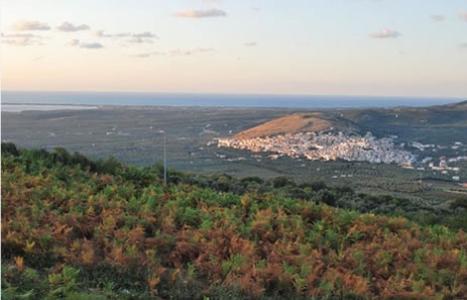
This town has ancient origins that date back to the Neolithic and Eneolithic era,
during the Christian era it was a very important place because it was the seat of the bishop and ecumenical councils. This town holds one of the
masterpieces of Italian art, the Romanesque Cathedral that has become famous for its bronze door as well as the rosette.
Not to be missed are also the Church of the protector St. Basil, the Palace of Avalos and the Museum for the Treasure of the Cathedral
where valuable medieval scrolls, 10 meters in length, are exhibited.
Foggia
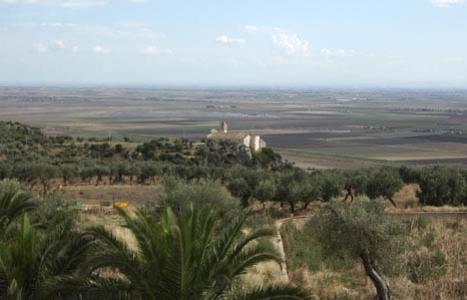
The city of Foggia is located right in the middle of the Tavoliere delle Puglie. Tradition has it that the city originated around the year 1000 following the
discovery of an image of the Madonna by some shepherds who then placed it near the Taverna del Gufo and it was there that the first houses were built.
Foggia was a very desirable city thanks to its strategic position and reached its splendor during the time of Frederick II, unfortunately in 1731, an earthquake destroyed it and it took until Mussolini was in charge to redevelop and make it habitable again.
Foggia was a very desirable city thanks to its strategic position and reached its splendor during the time of Frederick II, unfortunately in 1731, an earthquake destroyed it and it took until Mussolini was in charge to redevelop and make it habitable again.
Ischitella

This village is a point of transit for all those who wish to visit Foce Varano or the beautiful nearby Foresta Umbra.
Because of its panoramic setting you can admire a splendid landscape from several points in the village and on clear days, you can witness a spectacle of "blues": that of the water of the lake as well as the sky and the sea.
A lot of environmental tourism initiatives are linked to Foce Varano, the area that divides the lake from the Adriatic Sea.
Because of its panoramic setting you can admire a splendid landscape from several points in the village and on clear days, you can witness a spectacle of "blues": that of the water of the lake as well as the sky and the sea.
A lot of environmental tourism initiatives are linked to Foce Varano, the area that divides the lake from the Adriatic Sea.
Lake Varano
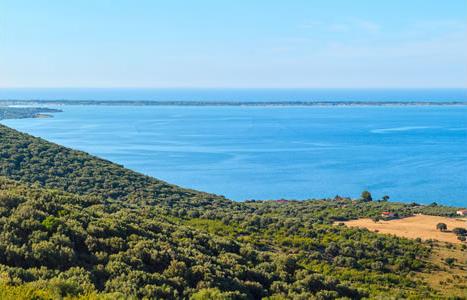
The entire area that surrounds the lake offers unique natural characteristics.The fields are all perfectly cultivated, the soil is red because of the abundance of bauxite, the woods contain eucalyptus and pine trees, and then there are the sand dunes as well as the sea.
The locals are always nice and willing to chat with every tourist, the population here is made up of fishermen and buffalo herdsmen. The culinary speciality of Varano is mussels and clams, renowned for their large size. It is also possible to visit one of the local dairies to take a closer look at how the women prepare the delicious buffalo mozzarella.
The locals are always nice and willing to chat with every tourist, the population here is made up of fishermen and buffalo herdsmen. The culinary speciality of Varano is mussels and clams, renowned for their large size. It is also possible to visit one of the local dairies to take a closer look at how the women prepare the delicious buffalo mozzarella.
Lucera
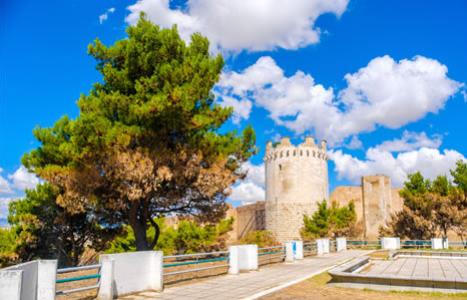
Lucera is situated on a hill that on one side is fully vertical. It has always been a city with a predisposition for art as well as being a place of great natural beauty. This is why the noble families of northern Apulia chose to settle here, building elegant palaces and houses. Worth visiting is the Castle of Frederick II, where you can admire the majestic walls built by the Angevins.
Manfredonia
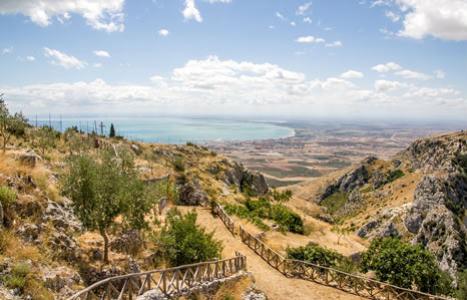
Manfredonia is located on one of the largest gulf in the central and southern Adriatic. It would have been a more prosperous town if it had not been subjected to constant looting by the Turkish people throughout its history.
Its past, however, was glorious as evidenced by the Swabian-Angevin Castle, the Church of San Domenico, the Basilica of Santa Maria Maggiore in Siponto, and the Abbey of San Leonardo.
The city's economy is based on fishing activities as the city has one of the largest fish stocks in the region.
Its past, however, was glorious as evidenced by the Swabian-Angevin Castle, the Church of San Domenico, the Basilica of Santa Maria Maggiore in Siponto, and the Abbey of San Leonardo.
The city's economy is based on fishing activities as the city has one of the largest fish stocks in the region.
Mattinata
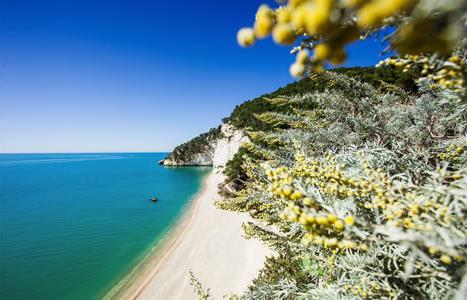
Mattinata is a coastal town that enjoys a rare beauty: surrounded by olive trees, almond trees, prickly pears and apricots.
The village, completely white, is also one of the most crowded tourist ports on the Gargano coast. Olive oil is the main asset of the town and for some years now there has been an attempt to combine the cultivation of olive trees with tourism activities.
In Mattinata you can go to spend a wonderful day at the seaside, its beach is one of the most beautiful in the Gargano.
The village, completely white, is also one of the most crowded tourist ports on the Gargano coast. Olive oil is the main asset of the town and for some years now there has been an attempt to combine the cultivation of olive trees with tourism activities.
In Mattinata you can go to spend a wonderful day at the seaside, its beach is one of the most beautiful in the Gargano.
Monte Sant’Angelo
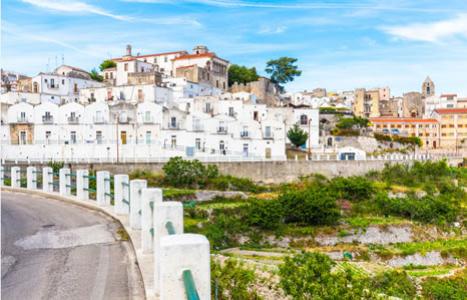
A wonderful place located about 800 m above sea level overlooking the entire territory underneath. Visiting Monte Sant'Angelo means having a day to explore the churches, monuments of great significance such as the Sanctuary of San Michele, the Tomb of Rotari, the Ethnographic Museum "Tancredi", the Civic Library and the Church of Santa Maria di Pulsano.
In this city, the traditional Tarantella dance and other dances and chants typical of the Gargano are very popular.
In this city, the traditional Tarantella dance and other dances and chants typical of the Gargano are very popular.
Rodi Garganico
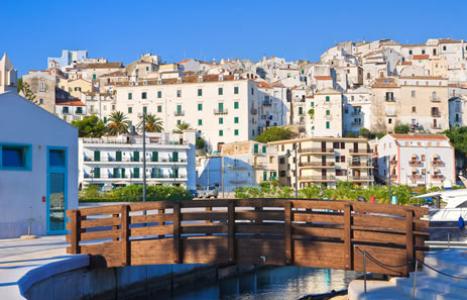
It is said that Rodi was founded by a group of Greek sailors, the so-called Silver Rhodi, from whom the city takes its name. The main economic resource of Rodi is agriculture centred on citrus and fruit orchards.
The clear blue sea and long sandy beaches are very popular with visitors, as well as a wonderful day at sea around Rodi, worth a visit is the Sanctuary of the Madonna della libera where you can see a wooden painting from Byzantine times depicting the Virgin Mary.
The clear blue sea and long sandy beaches are very popular with visitors, as well as a wonderful day at sea around Rodi, worth a visit is the Sanctuary of the Madonna della libera where you can see a wooden painting from Byzantine times depicting the Virgin Mary.
Peschici
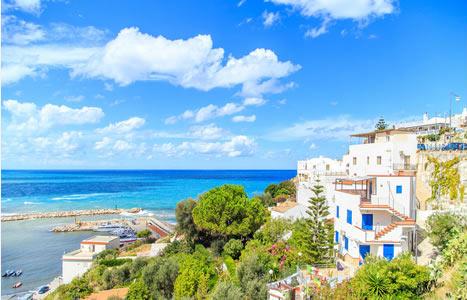
It is considered to be the Pearl of the Gargano, for its great beauty and for its particular position, lying on a cliff overlooking the sea, Peschici in fact means "cliff over the sea".
Through the recent retrieval of some artifacts it is possible today to affirm that this site has ancient origins dating back to prehistoric and protohistoric times.
The entire coast of this town is full of caves, inlets, bays, coves that can be discovered by boat or after a bit of trekking.
The village is also wonderful: a dense cluster of quaint houses divided by narrow streets and alleys ... in a typical Moorish style.
Through the recent retrieval of some artifacts it is possible today to affirm that this site has ancient origins dating back to prehistoric and protohistoric times.
The entire coast of this town is full of caves, inlets, bays, coves that can be discovered by boat or after a bit of trekking.
The village is also wonderful: a dense cluster of quaint houses divided by narrow streets and alleys ... in a typical Moorish style.
Rignano
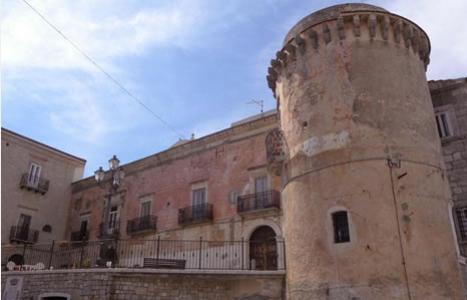
Known as the balcony of Apulia, because it overlooks the Tavoliere delle Puglie, it is in fact used as a launch pad by hang gliding enthusiasts. Like many Apulian municipalities, also Rignano has ancient origins dating back to the Palaeolithic age, attested by the inscriptions found in the nearby Grotta Paglicci. Inside the cave, a dolmen of international importance has also been found as it shows Neolithic wall paintings.
To be tasted and bought to be carried away is the local bread that is baked by hand with ancient techniques handed down by generations of local women.
To be tasted and bought to be carried away is the local bread that is baked by hand with ancient techniques handed down by generations of local women.
San Nicardo
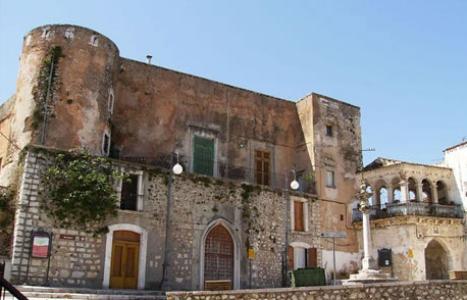
An ancient Lombard village situated on a hill between the lakes of Lesina and Varano. This town is famous for the production of olive oil and delicious dairy products, but its main attraction is the trade of dried flowers.
Not to be missed are the village of Terra Vecchia with its feudal Castle, which was once connected by underground tunnels to the Church of Santa Maria del Borgo.
On the outskirts of the village, you can admire the Dolina Pozzatina, a depression 130 meters deep with a circumference of 2 km.
Not to be missed are the village of Terra Vecchia with its feudal Castle, which was once connected by underground tunnels to the Church of Santa Maria del Borgo.
On the outskirts of the village, you can admire the Dolina Pozzatina, a depression 130 meters deep with a circumference of 2 km.
San Severo
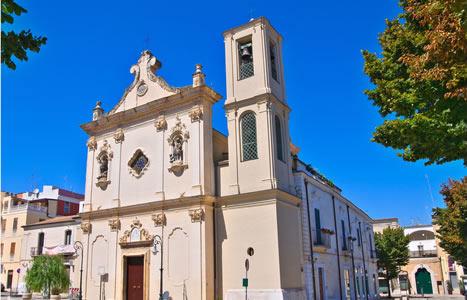
The origin of San Severo goes back to about the year 1000, as prehistoric settlements have been found.
This small town has gained world-wide fame due to its production of its wine, which is sold all over the world.There are several monuments to visit in San Severo, such as the Church of Santa Maria, the churches of San Severino Abate, San Nicola del Carmine and San Francesco.
Also worth a visit are the Sanctuary of the Madonna del Soccorso and the Palazzo dei Celesti, the Palazzo dell'Episcopo and the Teatro Comunale "Giuseppe Verdi", one of the most beautiful theatres in southern Italy.
This small town has gained world-wide fame due to its production of its wine, which is sold all over the world.There are several monuments to visit in San Severo, such as the Church of Santa Maria, the churches of San Severino Abate, San Nicola del Carmine and San Francesco.
Also worth a visit are the Sanctuary of the Madonna del Soccorso and the Palazzo dei Celesti, the Palazzo dell'Episcopo and the Teatro Comunale "Giuseppe Verdi", one of the most beautiful theatres in southern Italy.
San Marco in Lamis
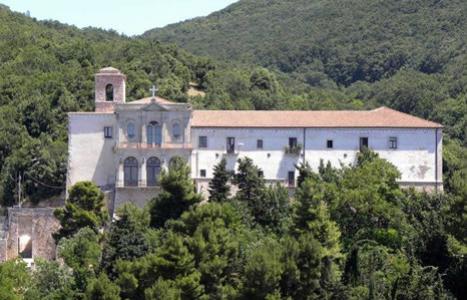
Lama in Latin means marsh, indeed this place was in ancient times a very marshy area. It is here that the Sanctuary of San Matteo rises, which has led the town to become an important destination for many pilgrims. The Sanctuary has a wonderful ancient library that is certainly worth a visit.
The Sanctuary of Santa Maria di Stignano and the Grotta di Montenero are also destinations for tourists and pilgrims.
The Sanctuary of Santa Maria di Stignano and the Grotta di Montenero are also destinations for tourists and pilgrims.
Troia
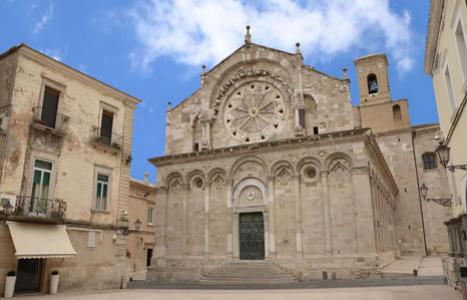
This locality was founded in the VII century A.D. by a group of refugees from the Roman locality Aecae. The village, besides being one of the most charming in Italy, is famous for its cathedral built around the 11th century which is considered one of the most beautiful Romanesque churches in Apulia.
There are various artistic and cultural legacies that Troia preserves, which are worth visiting. These include the Church of San Basilio, the various noble palaces, the Norman Castle, the Civic Museum, the Diocesan Museum and the Cathedral Treasure Museum, which houses the three famous Exultet illuminated scrolls, over 10 metres in length.
There are various artistic and cultural legacies that Troia preserves, which are worth visiting. These include the Church of San Basilio, the various noble palaces, the Norman Castle, the Civic Museum, the Diocesan Museum and the Cathedral Treasure Museum, which houses the three famous Exultet illuminated scrolls, over 10 metres in length.
Vieste
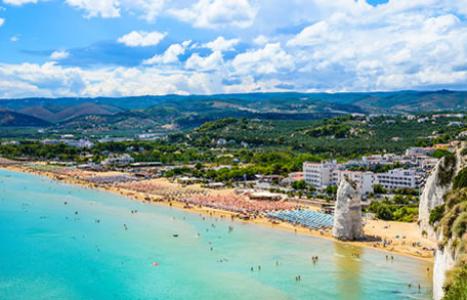
Vieste is located in the eastern part of the Gargano and can be considered the capital of the Gargano because of the great amount of tourism it offers, including hotels, campsites, residences, restaurants and much more.
Vieste is, however, a medieval village located on a promontory and when viewed from afar it is very picturesque. Worth a visit in Vieste are: the Seggio (a building with a sundial), the church of San Francesco and the Piazzetta Ripe, where you can see one of the many trabucchi of the Gargano, the Castle and the Cathedral, while 7 km from the town there is the Necropolis of Salata.
Vieste is, however, a medieval village located on a promontory and when viewed from afar it is very picturesque. Worth a visit in Vieste are: the Seggio (a building with a sundial), the church of San Francesco and the Piazzetta Ripe, where you can see one of the many trabucchi of the Gargano, the Castle and the Cathedral, while 7 km from the town there is the Necropolis of Salata.
Tremiti Islands
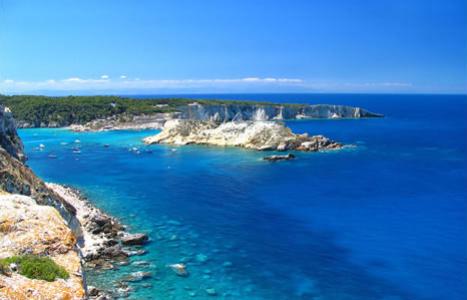
The Tremiti Islands are known as a true paradise on earth, for their beaches and coves with clear, turquoise sea! San Dominio is the largest island and offers the most services for tourists, opposite lies St. Nicholas and then further north Caprera whose name comes from the plants of Capers of which it is rich in. A short distance from San Dominio is the Cretaccio, which can be reached by swimming and is completely uninhabited.
The archipelago is a destination for tourists and divers who come here to admire the many submarine attractions.
The archipelago is a destination for tourists and divers who come here to admire the many submarine attractions.
Special offers
Reviews
View allIt is always convenient
to book from our website!
- Best rate guaranteed
- A precious handcrafted icon made of silver depicting Padre Pio
- Free garage
- Free Wi-Fi in the room
- A 10% discount voucher for future bookings
- In the majority of cases a cancellation will be free of charge and you will not need to enter your credit card information

Would you like to receive a quote?
Newsletter
RECEIVE NEWS AND OFFERS
Viale Aldo Moro, snc - 71013 San Giovanni Rotondo (Fg)
Hotel +39 0882/454894 - info@hotelgranparadiso.it
SPA +39 0882/452846 - Email: spa@hotelgranparadiso.it
Privacy & Cookie Policy - Cookie preferences - P.Iva 00962990719
Hotel +39 0882/454894 - info@hotelgranparadiso.it
SPA +39 0882/452846 - Email: spa@hotelgranparadiso.it
Privacy & Cookie Policy - Cookie preferences - P.Iva 00962990719
 SHOP →
SHOP →













"Location makes this place worth it."
Location makes this place worth it.
Amy - 18-07-2020
"Amazing Hotel!"
Amazing Hotel!
delre10 - 14-07-2020
"A Place Like Home"
A Place Like Home
ED E - 24-10-2019
"Memorable trip back to Italy with family"
Memorable trip back to Italy with family
Adrian S - 08-10-2019
"Beautiful & highly recommend!"
Beautiful & highly recommend!
Fab S - 10-07-2020
"Pilgrimage"
Pilgrimage
RayG518 - 20-11-2019